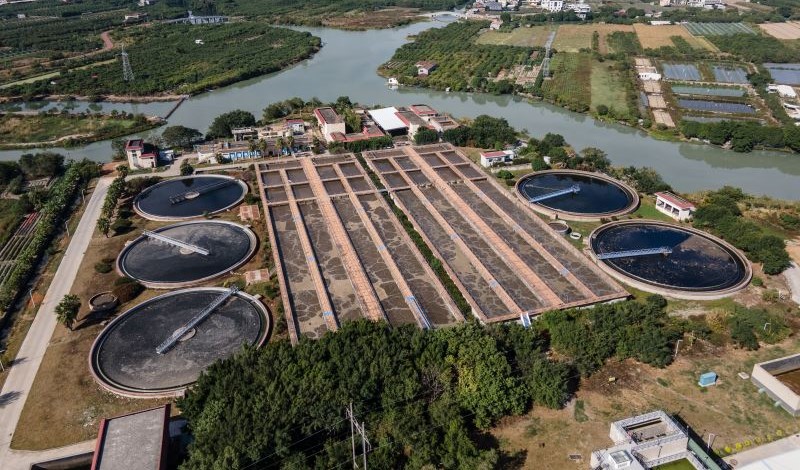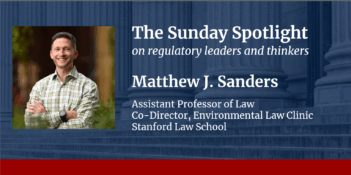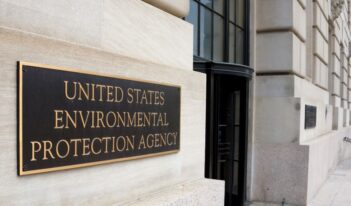
A recent Supreme Court decision shifts responsibility for pollution prevention from polluters to EPA.
The U.S. Supreme Court’s decision in City and County of San Francisco v. Environmental Protection Agency appears to be a case focused on narrow textual interpretation. Taken with other decisions by the Court, however, it will serve to further erode the protections in the Clean Water Act and other federal environmental statutes, undermining the gains made over the last 50 years.
In Sackett v. Environmental Protection Agency, a previous Clean Water Act decision, Justice Samuel Alito, Jr. and the majority of the Court sought a bright-line judicial test to define wetlands, concluding that the Clean Water Act covers only those wetlands with “a continuous surface connection to bodies that ‘are waters of the United States’ in their own right,’ so that they are ‘indistinguishable’ from those waters.”
Although the law favors bright-line tests, they often do not reflect the real world. Wetlands exist at the interface between land and water, both surface and underground waters. These hydrologic connections are not always easy to see or clearly delineate. Instead of grappling with this challenge, the Court focused on concerns about enforcement actions and large fines that a landowner might face to justify its decision while ignoring the public’s interest in wetlands as natural filters that protect and improve water quality. The prioritization of polluter’s interests over public’s interests is echoed in the San Francisco decision.
The San Francisco case concerned a permit to discharge pollutants from a municipal wastewater treatment plant into the Pacific Ocean. This kind of discharge permit has been central to the success of the Clean Water Act, cleaning up our nation’s waterways over the past 50 years. Most of the discharge permits across the country are for wastewater treatment plants that receive wastewater from homes and businesses and, in many cases, from industrial sites. Any weakening of these permits has the potential for wide-ranging negative impacts on water quality.
The wastewater discharge permit at issue in the San Francisco case included numeric effluent limitations—limits on the quantity of pollutants that can be discharged—for specific pollutants and a narrative limitation—a description of the water’s condition—that the discharge could not contain any pollutant at a level that would violate the water quality standards for the receiving waters. The only discharge into the Pacific Ocean in the area was from the wastewater treatment plant covered by the permit, so it was the only likely source of pollution that could have violated water quality standards.
Nonetheless, Justice Alito, writing for the majority, found the narrative limitation exceeded the Environmental Protection Agency’s (EPA) authority based on the text and the structure of the Clean Water Act. As in Sackett, the Court put more weight on the fear of enforcement actions against the permit holder than on the concerns about polluting the Pacific Ocean. Instead, the Court found that Congress has empowered the EPA to outline all the needed steps to meet water quality standards so that this kind of narrative limitation is not necessary.
This reasoning seems sound—the regulatory agency should develop effluent limitations for all the pollutants in discharges. In the real world, our wastewater is getting more and more chemically complicated with pharmaceuticals, microplastics, per- and polyfluoroalkyl substances (PFAS) and other compounds. Given the current defunding of all elements of EPA’s regulatory and research programs, its capacity to develop unique treatment plans is only declining. EPA noted in the San Francisco case that the wastewater treatment plant managers have a better understanding of their systems and the wastewater they receive, so they are better positioned to develop a treatment plan to address their pollution challenges. The Court scoffed at this argument, stating without evidence that EPA has the resources it needs.
The court’s framing also dismisses the cooperative federalism found in the Clean Water Act. All but two states in the country have been delegated authority to issue point source pollution permits—National Pollution Discharge Elimination System (NPDES) permits—under the Clean Water Act by EPA. This structure means that state agencies take the lead on developing NPDES permits. That happened here—the California Regional Water Quality Control Board for the San Francisco Bay Region approved the final Oceanside NPDES permit, and the EPA did as well. The state primacy in this regulatory structure should alleviate concerns about federal overreaching and impacting states’ rights. But, after noting the permit approval of the California Regional Water Quality Control Board in the facts, the court ignores the state agency’s regulatory role throughout the rest of the decision.
As Manny Teodoro has noted, the San Francisco decision, coupled with the Court’s recent overturning of the Chevron doctrine under which courts deferred to reasonable agency interpretations of ambiguous statues, will result in more challenges to every element of discharge permits. These challenges, in turn, will further weaken the protections in the Clean Water Act to the benefit of polluters and the detriment of the public, our rivers and our streams.
The San Francisco decision is troubling because it shifts the burden of pollution prevention from the permit holder to the permitting agency. The Court found that “determining what steps a permittee must take to ensure that water quality standards are met is the EPA’s responsibility.”
Thus, responsibility is not with the polluter. As a result, a discharge is legal until EPA tells the discharger what to do to meet water quality standards. At a minimum, it shifts the burden away from polluters to demonstrate that their discharge is safe and places the burden (and costs) on environmental agencies and the public generally. This framing turns the precautionary principle—the foundation of environmental law and policy—on its head.
The precautionary principle counsels taking preventive action in the face of uncertainty and shifting the burden of proof to the proponents of an activity. The Clean Water Act includes several elements of the principle, such as the prohibition on all discharges without a permit, the antidegradation policy, and the margin of safety used in the development of total maximum daily loads designed to improve polluted rivers and streams.
The Court’s reasoning in both Sackett and the San Francisco case shifts the burden from the proponents of the activity—filling wetlands and discharging pollution—to the regulatory agency and thus to the public. Despite the clear framing of the Clean Water Act and other environmental statutes, this Court is not going to make the polluter pay.
This essay is part of a series, titled “The Supreme Court’s 2024-2025 Regulatory Term.”




